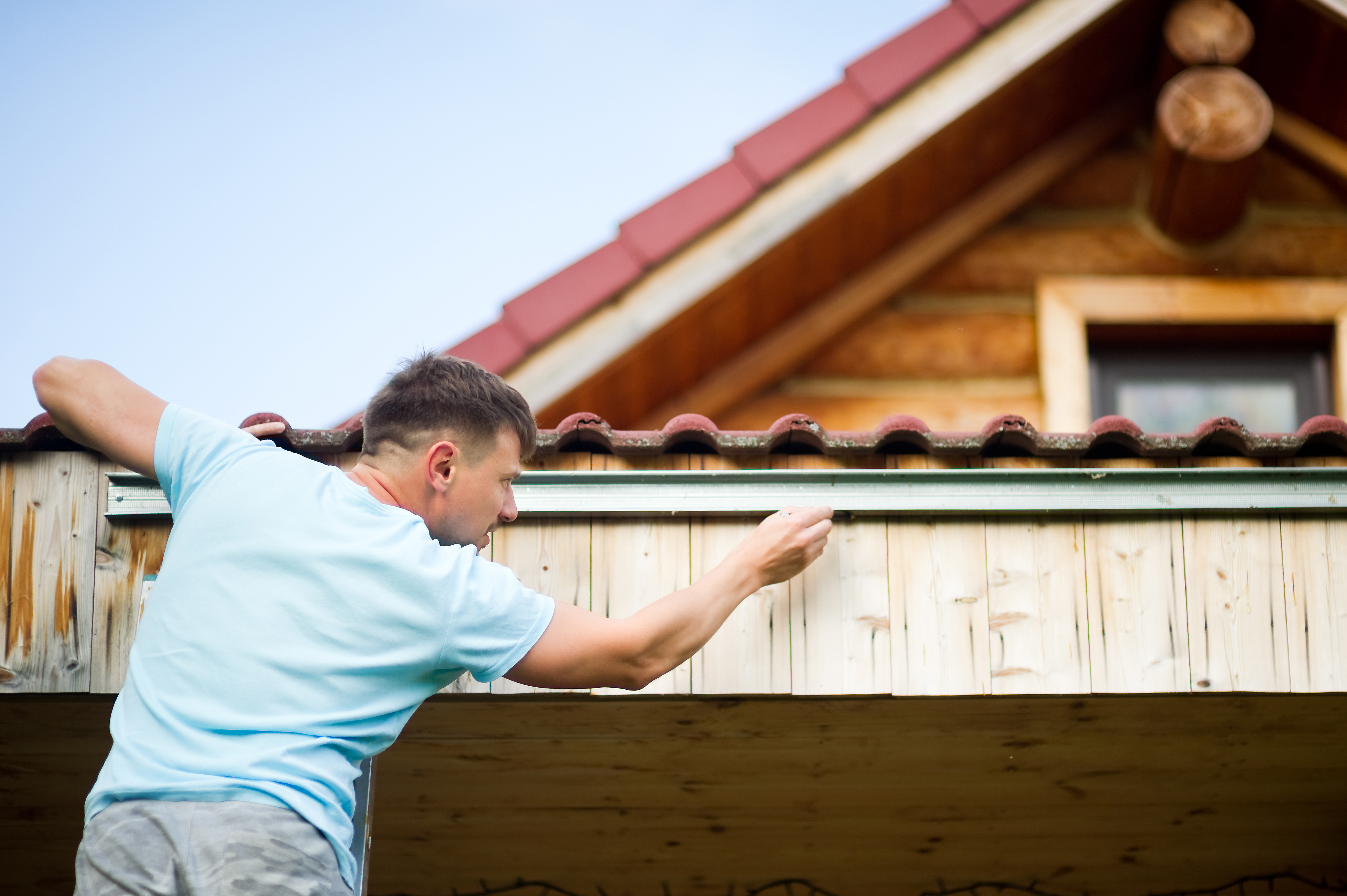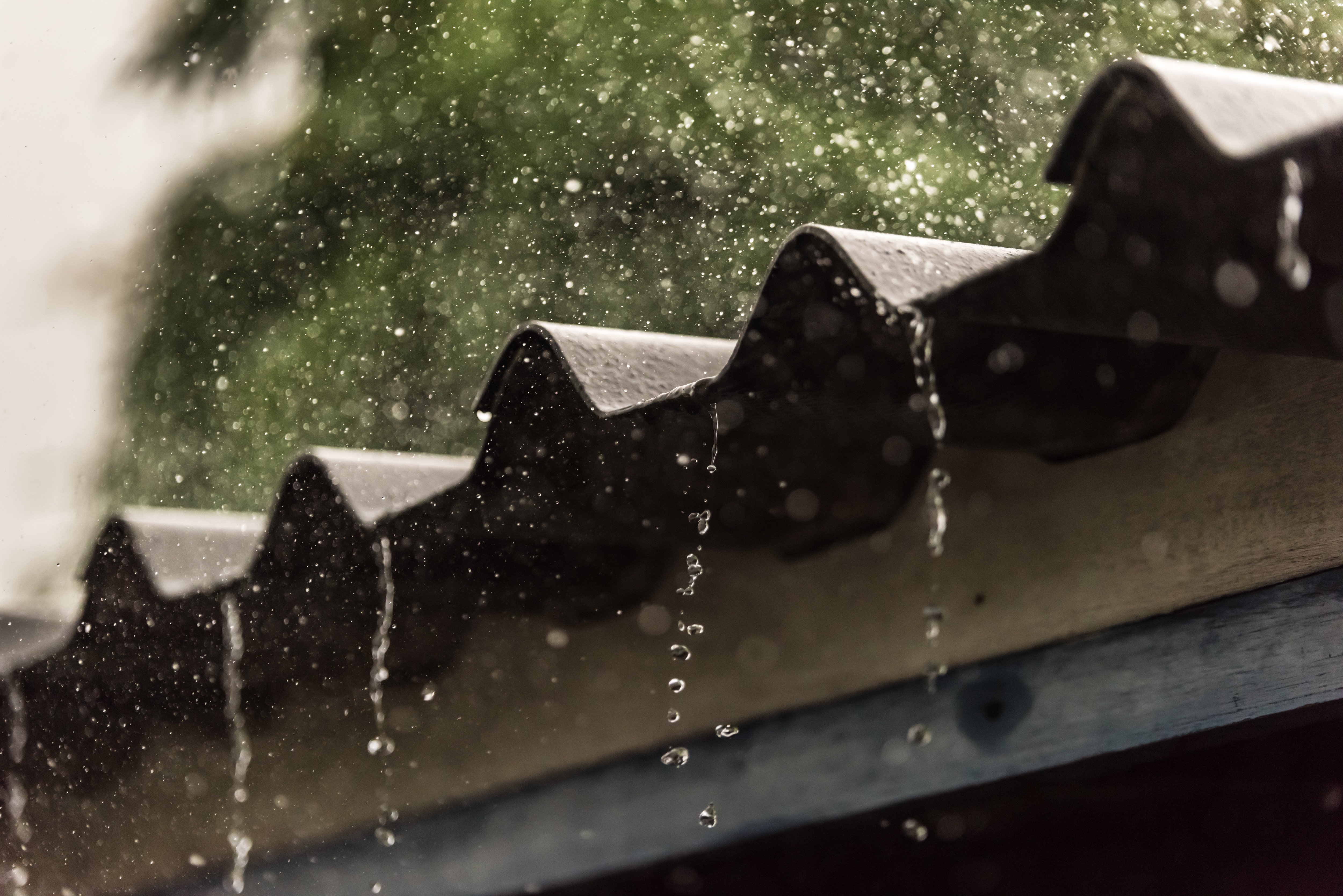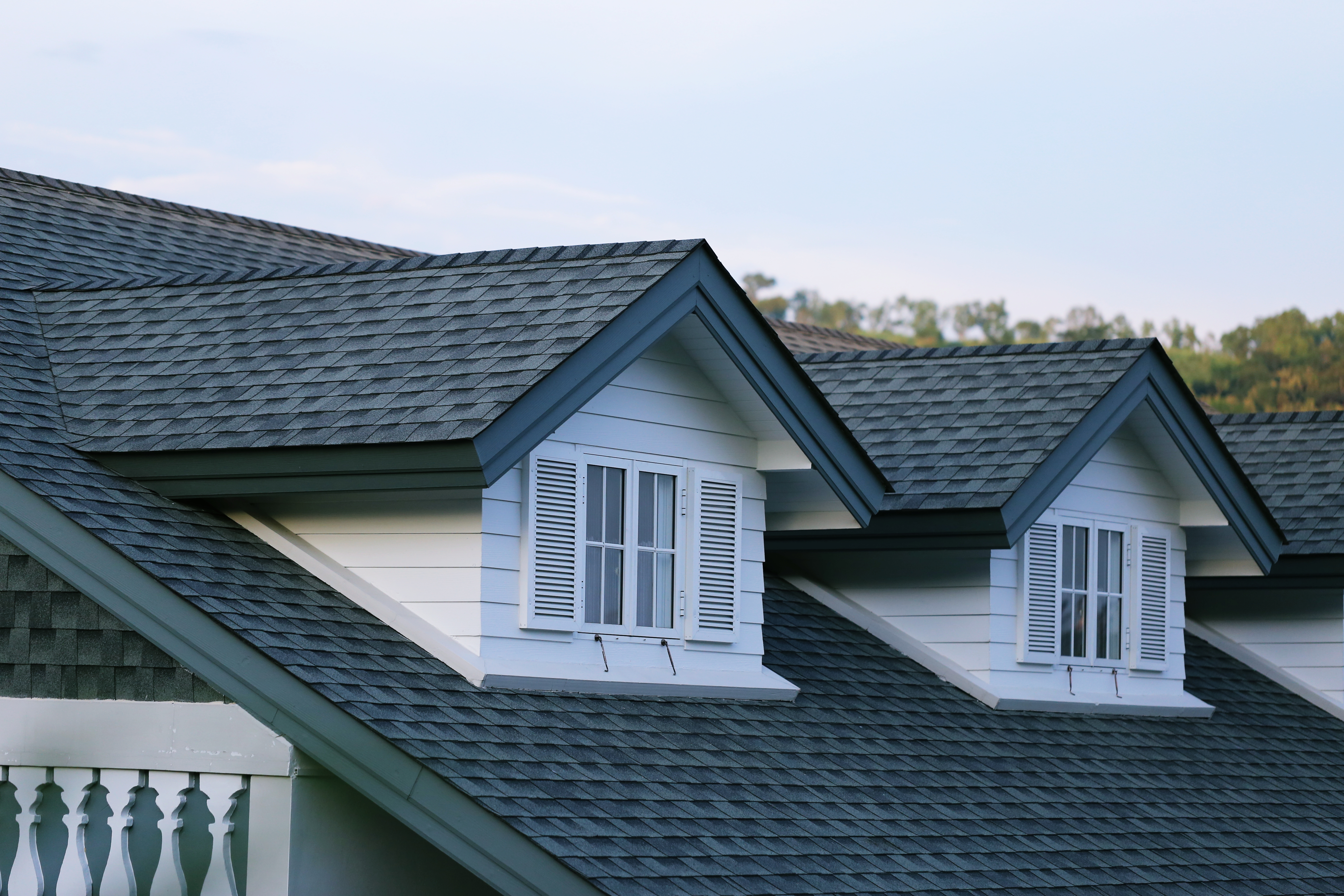How to Find & Repair a Roof Leak

If your roof is leaking, it’s not a problem you can ignore. Drafty windows? Those can be put off until next week. Front door in disrepair? You can wait until the next big door sale. Water dripping on you while you sleep? It’s time to leap into action.
Luckily, repairing a roof leak is usually a minor issue that you can fix yourself. The hardest problem can be pinpointing the actual leak. Below, we’ll explore how to find a roof leak, how to repair it, and the tell-tale signs that it’s time for a brand new roof rather than a temporary fix.
How to Find a Roof Leak
Even a tiny roof leak can cause serious damage to your home’s interior over time, so it’s crucial to correct the problem as soon as you notice it. Water usually finds its way inside through penetrations or projections like vents, dormers, and chimneys. Determining the source of a leak can be difficult because the visible signs may be several feet away from the cause.
Common Spots for Roof Leaks
There are a few places in your home that are more vulnerable to leaks than others. If you’re not sure where the leak is coming from, check these spots on your property first.
Plumbing vent boots and roof vents: Search for cracks or other flaws in the base of your flashing, the material applied to corners and valleys to keep your roof components waterproof. This material is usually metal, but may also be rubber or even plastic. Also check for broken seams around boots and vents. Rubber gaskets can rot over time and allow water to seep through. If the plumbing vent boot (covering the pipe) is damaged, you’ll have to replace it. If the boot is in good shape but missing screws, replace them with new fasteners. Similarly, roof vents that are cracked or damaged need to be replaced to prevent water from entering the base.
Nail or mounting holes: Maybe you’ve taken down a satellite dish or an old vent from your roof. But during the process, you left something behind: holes. Those tiny leftover holes can result in very small leaks that take a long time for homeowners to notice. You can easily prevent this by covering nail or other mounting equipment holes with roof flashing. Make sure to use caulking or roof cement around the edges to keep the flashing firmly secured.
Step flashing: This is a material used around chimneys or walls that intersect. Designed to direct water away from the home, if this flashing is loose or rusted, water can seep through. To correct the issue, replace the faulty material with new flashing and secure it with roof cement.
Dormers and walls: Dormers (a roofed structure jutting out from a sloped roof, typically with a window) and walls have vulnerable vertical surfaces that can allow water to drip inside. To fix these leaks, you may have to dig out and reapply the caulking around adjoining surfaces, replace siding, or re-caulk the corner flashing.
Skylights: Skylights offer countless benefits. They brighten a room, improve solar gain, and warm your home during the winter. Unfortunately, the rubber seal around skylights may dry out and crack, leaving it open to water damage. Or, skylights can be improperly seated and leave a small gap in your ceiling. In both cases, you can seal the opening with silicone caulking.
Tree damage: Is there a tree close to your house? If so, branches might be causing subtle damage to your roof that you can’t see. Or, in a worst-case scenario, a tree might fall on your home and cause a visible hole. In this case, you’ll need to call a professional. But in the meantime, you can use a tarp on the roof to prevent more water damage.
Gutters: When gutters are working well, they direct water away from your house and into storm drains. But gutters can easily be filled with debris from surrounding landscaping and accumulated dirt or dust. When they’re clogged, water can pool and sit against vulnerable areas of your home, eventually causing leakage. Prevention is easy: clear your gutters regularly and inspect them before the rainy season.

Follow these steps to find a roof leak:
Search the attic with a flashlight for water stains and trace any stains to the roof and rafters.
If you can’t see any water marks, ask a friend or family member to stand in the attic while you climb onto the roof with a garden hose (watch your step!).
Soak the roof on a low setting, near the area where the leak can be seen inside the house. Make sure you’re using enough water to mimic the effect of rain. Point the hose above the leak area, below it, and to the right and left until the helper sees the leak.
Pro Tip: Make sure you allow the water to run over each area for several minutes before moving to the next spot.
Wait until your helper signals that they see the water from the leak.
Mark the area of the leak with tape, so you can come back to patch it later (once the roof is dry!).
How to Repair a Roof Leak
To repair a leaking roof, you’ll need to pay attention to your roofing material – and there are countless types on the market today. Here are some of the most common:
Asphalt Shingles
Asphalt shingles are the most popular roofing material, as they’re lightweight, inexpensive and easy to install. You can repair a few troublesome asphalt shingles easily. If shingles are curled, straighten them, and use roof sealant to affix the corners. You can also repair clean cracks using roof sealant alone, just make sure the sealant is spread evenly over the crack. To make the repair more aesthetically pleasing, gather loose asphalt granules and spread them over the crack.
If a section or part of a shingle is missing, you’ll need to remove the shingle and replace it entirely using a pry bar. Remove any leftover roofing cement after taking off the shingle. Install the new shingle by gently lifting the shingle above to slide it into place. Use roofing nails to secure the shingle and apply roofing cement.
Roll Roofing
You can mend small gaps and cracks with roofing sealant, but any large blistered areas or bigger cracks will need a patch. Cut any bubbling or blisters to release the water or air trapped inside. When you do this, it’s important that you’re only cutting into the top layer. If the blister or bubble had water, dry the area and let it fully dry out for 12 to 24 hours.
In some cases, a crack means that water seeped into the roofing substrate under the top layers of the roof. If this occurs, you’ll need to remove a section of the substrate and cut a new piece of the substrate to replace it. Then, add a new patch of roll roofing on top with roofing sealant and fasteners.

Signs You Need a New Roof
Although minor fixes are relatively easy, there are some telltale signs that you need to call a professional. Signs you may want to look into investing in new roofing include:
Widespread roof damage (not just a shingle or two)
Frequent small leaks
Major structural issues
Moss accumulation
Sagging
An aging roof past its 20 to 25-year lifespan
While a new roof can be a major investment, it can provide worthwhile benefits. For example, a new roof can enhance your home’s energy efficiency and possibly even improve your property value. If you’re hesitant to replace your roof because of the cost, PACE financing offers homeowners a way to install a roof today and pay for it over time through your annual property tax bill. Many common roofing materials qualify: asphalt shingles, metal roofing, clay and concrete tiles, wood shake, and more.
Fixing Your Roof and Keeping Your Home Comfortable
Although a roof leak is a problem that requires an immediate solution, most repairs can be fixed on your own. With that said, make sure to check your roof regularly, inspect your gutters, and keep trees at a safe distance away from your home. And, if you’re concerned about structural issues or your roof is reaching the end of its lifespan, consider calling in a professional for a new roof quote.
If you need help financing a new roof, Ygrene’s PACE program can help. There are hundreds of PACE-eligible residential improvements available to you, so contact Ygrene today to begin your journey. For no money down, you can have an attractive, energy-efficient roof in just days. If you’re not sure who to choose for the job, Ygrene works with a number of certified contractors in Florida, California and Missouri – we’re happy to recommend someone you can count on.




